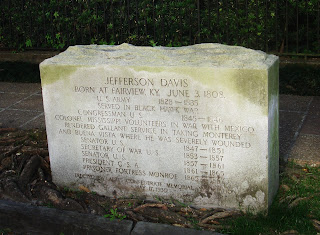
1137 Second St.
This house is an example of the type of Victorian architecture popularized in uptown New Orleans toward the end of the 19th century. Many who built such homes were from the Northeast and left New Orleans in the summer; otherwise, it would be odd to see this kind of claustrophobic house, normally intended for cool climates, in New Orleans. Note the exquisite stained glass and rounded railing on the gallery.

Payne-Strachan House
Jefferson Davis, president of the Confederate States of America, died at this house at 1134 First St. Davis fell ill while traveling and was taken here, the home of his friend Judge Charles Fenner (son-in-law of owner Jacob Payne). A stone marker in front of the house bears the date of Davis's death, December 6, 1889. (Davis was buried in magnificent Metairie Cemetery for 2 years and then was disinterred and moved to Virginia.)



Brevard-Mahat-Rice House
Designed in 1857 as a Greek Revival town house and later augmented with an Italianate bay, this house, at 1239 First St., is a fine example of "transitional" architecture. It was historically called Rosegate for the rosette pattern on the fence. (The fence's woven diamond pattern is believed to be the precursor to the chain-link fence.) This was the home of novelist Anne Rice and the setting for her Witching Hour novels.
No comments:
Post a Comment